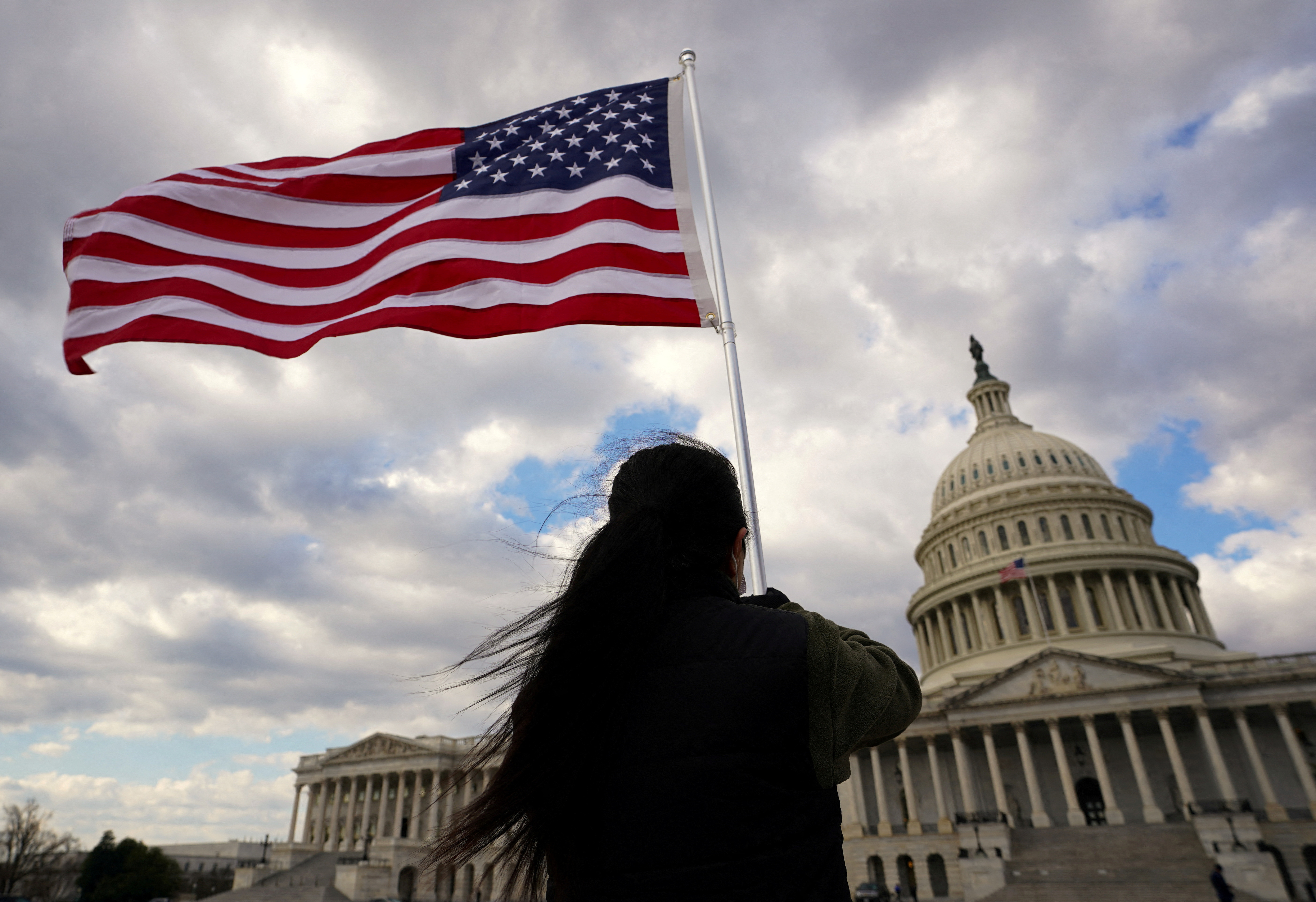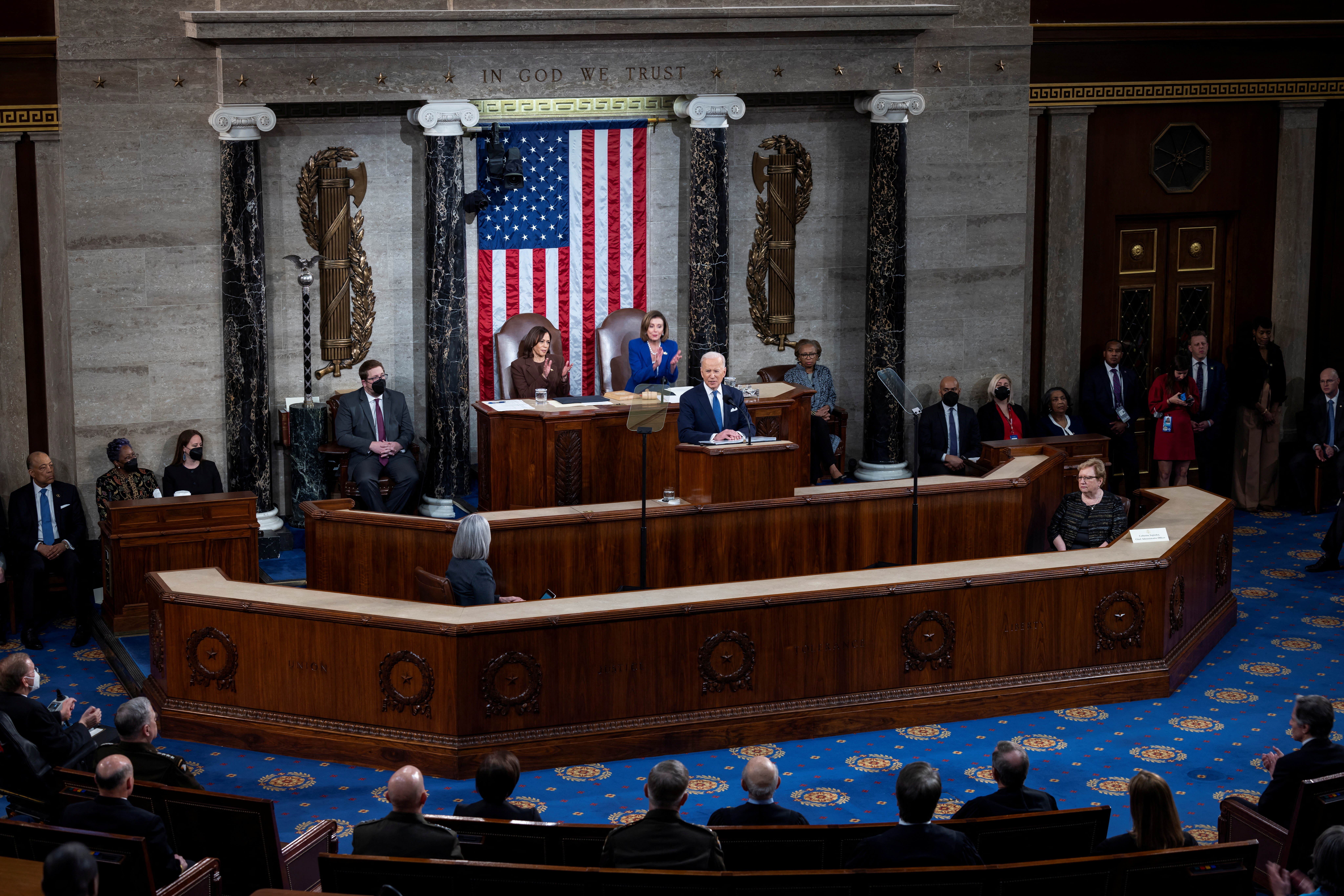U.S. President Joe Biden will deliver his first State of the Union address after Republicans took control of the House of Representatives in a speech that may mark the unofficial start of the 2024 presidential campaign season.
Here is what to expect.
Biden will deliver his 2nd State of the Union address on Tuesday, Feb. 7, 2023, at about 9 p.m. Eastern time (0200 GMT Wednesday). The speech will be broadcast live on the major U.S. broadcast television networks and online.
The speech could deliver Biden his largest television audience of the year. An estimated 38.2 million people watched the speech on U.S. television last year, according to the data provider Nielsen.
That audience will give Biden a chance to shape public perceptions over the debt limit, social spending, the Russian war in Ukraine and other topics as he plans to announce his re-election campaign in the coming weeks.
It also gives him an opportunity to shore up support among Democrats, some of whom are concerned about his age and other issues. Biden turned 80 in November and, if re-elected, would be 82 at the start of a second term.
He is expected to use the speech as an unofficial start to the 2024 presidential campaign season, laying out a set of policy priorities that may or may not find support in Congress.
He is expected to tout economic progress following the COVID-19 recession, draw sharp contrasts with the priorities of some Republican opponents and lay out “unity” agenda items that he believes should unite both parties.
The speech is weeks in the making and subject to many drafts between Biden, his speechwriters and various political and policy officials in the administration.
Last year, Biden’s speech came just days after Russia’s invasion of Ukraine and focused heavily on explaining Washington’s response.
The speech is delivered during a joint session of Congress. All members of both the Democratic-controlled Senate and Republican-controlled House are invited. Members of Biden’s Cabinet, the armed forces and the Supreme Court also attend. Partisan outbursts can occur.
Biden was formally invited to give the address earlier in January by House Speaker Kevin McCarthy. McCarthy will preside over the event and be accompanied by Vice President Kamala Harris, who is also the president of the Senate.
The president also invites family members and other guests who sit in the First Lady’s view box from the balcony and can be used to amplify points he is making during his speech.
Members of Congress invite guests, too.
This year, guests will include the mother and stepfather of Tyre Nichols, the Black man who was fatally beaten by Memphis police officers, who were invited by Congressional Black Caucus chair Representative Steven Horsford.
Missouri Democrat Cori Bush said she has invited Michael Brown Sr., the father of Michael Brown, whose 2014 shooting by a Ferguson police officer helped give birth to the Black Lives Matter movement.
House Foreign Affairs Committee Chair Michael McCaul, a Texas Republican, said he invited Roya Rahmani, who served as Afghanistan’s first female ambassador to the United States, to send a signal to the women of Afghanistan that they had not been forgotten, while Republican Conference Chair Elise Stefanik will bring Jeffrey Smith, a county sheriff from upstate New York.
One person who does not attend is a single member of Biden’s Cabinet who will be picked as a “designated survivor.” That individual will be housed in a secure location and is tasked with taking over the government in case of a catastrophe that impairs the president and his other successors at the Capitol.
The designated survivor for this year’s speech has not yet been announced.
Republicans have picked Arkansas Governor Sarah Huckabee Sanders, who served as White House press secretary under Donald Trump, to deliver their response. That speech is generally delivered shortly after the president’s.
Related Galleries:



